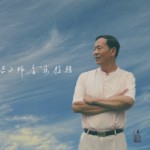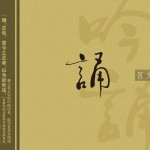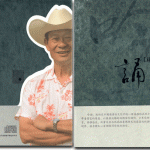“The Path of Life” Book Club Starter Kit
For anyone who may have wanted to start a Path of Life book club and discussion group, but was unsure of how to begin, we offer this as a suggestion. Of course, this is only a suggestion, a way to begin. You may have your own ideas, structure and format, and as the discussions broaden and deepen and participation increases, the meetings are likely to evolve.
Before Pangu Shengong came into existence as a powerful and effective Qi Gong form, there were thousands of instances of people healing serious illnesses and difficult life issues through reading the three volumes of The Path of Life. After receiving numerous reports from readers of The Path of Life, Master Ou was inspired to ask Pangu if the information and experience of these books could be condensed into what we now know as Pangu Shengong.
Master Ou teaches that for one to be an outstanding practitioner of Pangu Shengong, he encourages the following five practices:
1) Practice of the Pangu Shengong Qi Gong forms (Moving, Nonmoving, and Advanced/Condensed as applicable).
2) Give healing sessions whenever possible, either through the application of The Healing Form, or through practicing PGSG for the benefit of others.
3) Try to increase our kindness, tolerance and love in all situations.
4) Read all three volumes of The Path of Life regularly.
5) Inform and encourage others in the above practices.
Now that The Path of Life is available in English, we have an opportunity to bring even more health and happiness to ourselves and the people around us.
The Proposal
Practicing PGSG in a group increases its effectiveness. The same is true for reading and discussing The Path of Life. In both cases, a greater number of people engaged in the practice increases the Qi field in a way that is greater than the sum of the participants’ Qi fields. Many people have participated in regular group practice of PGSG. To deepen the practice and its effects, we may add a weekly (or more often!) Path of Life book club meeting.
The Structure
Each of the three volumes are divided into three parts.
Volume One, 46 Chapters:
1) Chapters 1-15
2) Chapters 16-30
3) Chapters 30-46
Volume Two, 47 Chapters:
1) Chapters 1-15
2) Chapters 16-31
3) Chapters 32-47
Volume Three, 34 Chapters
1) Chapters 1-11
2) Chapters 12-23
3) Chapters 24-34
One part is read in preparation for three meetings. The person hosting the meeting may connect with Master Ou’s heart beforehand (become calm, recite the PGSG maxim, and ask to be connected with Master Ou’s heart) and then choose one chapter from the meeting’s portion to read aloud to the group, and then open a free flowing discussion of those chapters that were read for the meeting. For each segment of the book, 3 questions have been prepared, each participant is asked to write out a response to one of those questions (about one page) and present it to the group as part of our discussion.
The Logistics
Certainly, choosing to be a part of the book club requires some commitment. All the participants will have to have read the chapters beforehand. We suggest preparing a one page response to one of the three questions, and then, at the next meeting, choose a different question to answer. To begin the discussion, each person may read his or her response to the group.
Volume One:
Part One
1) How is God Of Saucer’s character different and/or the same from your previous
conception of The Divine and what responses does that give rise to?
2) How do you see the concepts of The Unity of Idealism and Materialism as central to the theme of this book?
3) If you were to lose control over your own body to another force, how would you
react? Similar to Master Ou or differently?
Part Two
1) Throughout Volume One, there are numerous examples of Pangu exercising complete control of Master Ou. What do you see as Master Ou’s response to
this phenomenon and how does this response evolve? Do you see any useful examples for yourself?
2) Volume One introduces us to the concept of people having “two hearts,” which must be combined, first by Master Ou, and later by all people. How do you
see these hearts best becoming combined? Do you see any significance in Master Ou’s initial exercises in heart combination?
3) Pangu reveals that the Universe has two centers. How might this effect our perception of our own lives and perspectives?
Part Three
1) Chapter 30 mentions that the happiest and most important thing a person can do is to correct one’s own error. In the broader context, how does this relate to the formation of the Future World, and in a smaller context, do you see this as being beneficial to your daily life? This, then, brings us to Chapter 31, which describes the principle of evolution through kindness and benevolence, and also states the difficulty in achieving this behavior consistently. Do you see any relationship between these two chapters?
2) The deterioration of the first human world is precipitated with the breakdown of the monogamous nature of the relationship between male and female (Pangu with the Wild Rose, The Jade Emperor’s promiscuous lifestyle, Fairies (some actually demons) and Humans creating love triangles). How do you see this as an unraveling of the overall balance?
3) Mao Zedong and the Monkey King, Master Ou’s reflection in the window and the two previous worlds created by Pangu the 26th show that the present day circumstances have their origin in the distant past. How does this effect your views of good and evil, right and wrong, and cause and effect?
Volume Two:
Part One
1) In Chapter Four, Pangu congratulates Master Ou after Pangu’s control over him becomes even more pronounced. Why is this cause for “congratulations”? How do you understand this?
2) In Chapter Eight, we discover the reason Pangu created and destroyed so many
worlds. What was the reason and how do they relate to the presence of so many
difficult circumstances in today’s world?
3) Chapters 14 and 15 deal with the concept of infinity. How does the infinite manifest in the Universe? How does it manifest in mundane measurements? Does this have any relevance to our own understanding of ourselves, our lives and our potential?
Part Two
1) Chapter 18 states “the fundamental relationship of the Chaos is sexual.” Pangu offers the examples of yin and yang forces needing to be balanced in human bodies, through day and night, female and male, etc. How does this concept effect your thoughts on opposition and unity, disharmony and harmony, in how they become imbalanced and how they may regain balance
2) In Chapter 20 we learn of Pangu’s Sacred Decision. What is this decision and how does it shape the lives of people living today?
3) Chapter 26 deals with “The Crux of All Problems.” In thinking of many of our own difficulties, can this “crux” relate to all of them?
Part Three
1) Chapter 33 describes Master Ou, at least on the outside, as being “ordinary.” Why is this important and how might it lead to success?
2) Chapters 34, 35, and 36 deal with Master Ou’s early life. How might these experiences been influential in his later encounter with Pangu? Do you see any correlation in Master Ou’s life to Pangu’s earlier experiences?
3) Chapter 44 states “Things Will Not Vanish After Death.” After reading this chapter, does it alter your context for how you perceive events in your own life and in others? If so, how?
Volume Three
Part One
1) If the greatest task of future humans will be to enjoy and to breed more people who enjoy, how do you understand future enjoyments? How are they like today’s enjoyments and how will they be different?
2) How does Chapter 7 explain competition without conflict? Without conflict, what will be the driving force for future humans to continue to evolve? How do you imagine that evolution will be different than today’s?
3) If love becomes the primary principle in all future relationships (partners, parents and children, friends and acquaintances, etc.) what would happen if each of us tried to put love in the first position in every action and interaction? How do you imagine your life would be different? What effects would that have on present relationships?
Part Two
1) Chapter 13 lays out the principles of good and evil in thoughts and actions. What are these principles and how do you see them as relating private actions to public good and evil?
2) Chapters 17 and 18 discuss some of the extraordinary abilities available through supernatural power. If you could be granted just one supernatural ability today, what would you choose? What do you imagine the benefits would be? What would be the temptations?
3) On page 117 it states “‘Usual things can be understood with usual thinking, while abnormal things can be comprehended only with unusual views. You would be more calm if you could think like that.’” How do you understand this and how might we be calmer if this idea is applied?
Part Three
1) In Chapter 24 we find Pangu singing a song of lamentation. What feelings does this song evoke? How does Pangu’s great struggle mirror the struggles we all encounter?
2) The Festival of Rejuvenation replaces our current circumstances of death and separation with eternal life and forever growing and deepening relationships. In one sense, it encapsulates Volume Three’s message of hope and encouragement. What present day struggles does this resolve, both in the here and now, and in the future world?
3) The concept of a final judgement comes up in the final four chapters of Volume Three, in three phases. How do you recognize those phases and how might we smooth our transition through each of those phases?




 Mr. Xue
Mr. Xue




 Paul Fraser
Paul Fraser